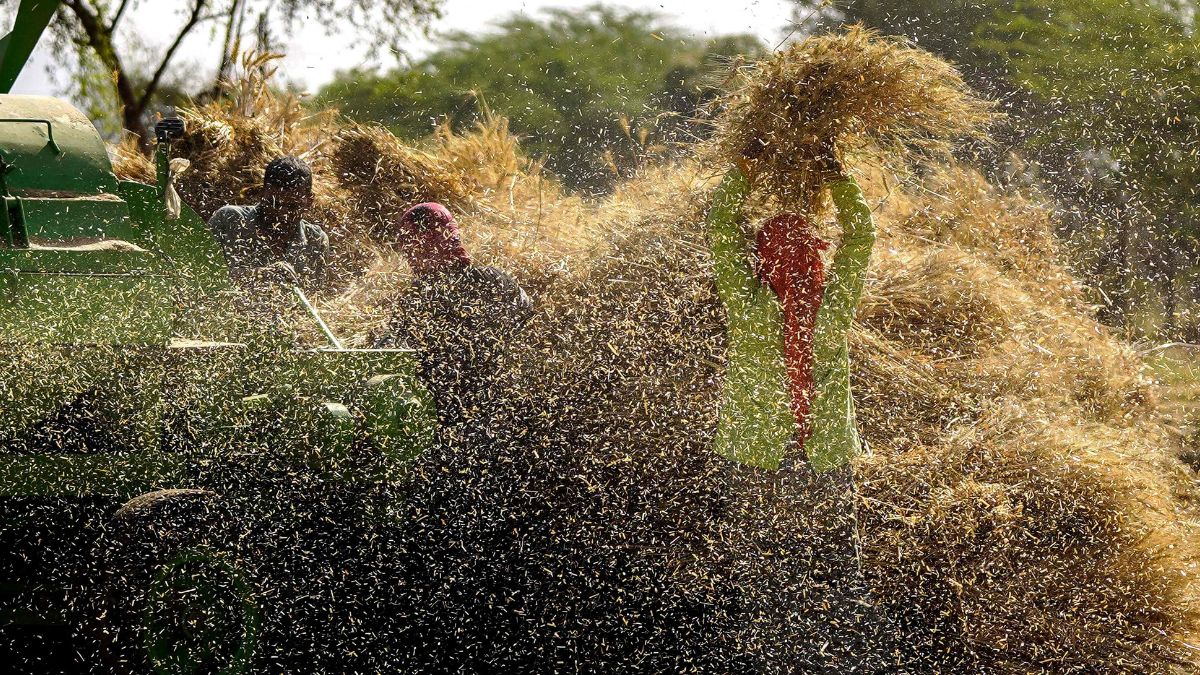Good agricultural output, sliding crude oil prices urge RBI to cut inflation estimates to 4 per cent
 Farmers thresh harvested wheat at Ajmer in Rajasthan | AFP
Farmers thresh harvested wheat at Ajmer in Rajasthan | AFP
The Reserve Bank of India cuts the fiscal 2026 inflation projections to 4 per cent on the back of better-than-expected agricultural production and plummeting crude oil prices.
RBI Governor Sanjay Malhotra did not sugarcoat when announcing the latest recommendations from the 54th monetary policy committee (MPC) meeting that concluded on Wednesday. He said that global uncertainties might further add pressure on the Indian currency.
However, Malhotra assured that the apex bank would follow clear, consistent, and credible policies in the best interest of the economy. Adding that the outlook for food inflation turned decisively positive, the RBI governor noted a broad-based seasonal correction in vegetable prices. He also noted that the second advance estimates point to a record wheat production, along with and higher output of key pulses compared to a year ago.
“On the inflation front, while the sharper-than-expected decline in food inflation has given us comfort and confidence, we remain vigilant to the possible risks from global uncertainties and weather disturbances,” said Malhotra.
Adding to the RBI governor’s words, the MPC noted that the recent fall in crude oil prices helped lift the inflation outlook.
The recent RBI outlook for Consumer Price Index (CPI) inflation for the financial year 2025-26 now stands at 4 per cent, with first-quarter at 3.6 per cent, the second quarter at 3.9 per cent, the third quarter at 3.8 per cent, and the fourth quarter at 4.4 per cent.
‘Surplus’ system liquidity, says RBI
Moreover, Malhotra assured that the system liquidity was in ‘surplus’ in March.
Despite the latest tariffs imposed by US President Donald Trump on most of the world, including India, the RBI governor said that India’s forex reserves—which stood at $676 billion as of April 4—were enough to shield imports of 11 months.
However, RBI noted that the investment activity in India gained traction and expected it to improve going forward due to ‘sustained capacity utilisation’.
‘Non-inflationary growth’ seemed to be the buzzword this time around, with Malhotra doubling down on the monetary policy’s anchor role in ensuring economic stability.
In line with this, the RBI proposed to empower the National Payments Corporation of India (NPCI) to revise the UPI limits in person-to-merchant transactions ‘as per needs of economy’. Moreover, the apex bank expanded the scope of co-lending, which was restricted to priority sector loans.
Liquidity was a major concern for investors and market experts. Dispelling such fears, the RBI governor stated that system liquidity turned in surplus during March, after it was in deficit in January. It tapered during February due to various measures, he stated.
Business